Welcome to INTER-NOISE 2019 MADRID!
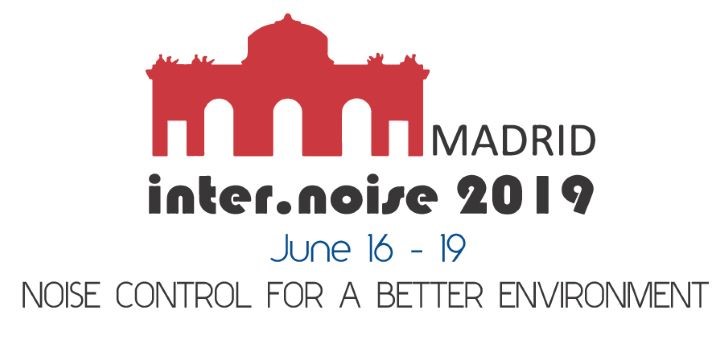
The Spanish Acoustical Society (SEA) on behalf of the International Institute of Noise Control Engineering (I-INCE) is organizing INTER-NOISE 2019 in Madrid. It will be held from June 16–19, 2019, at the IFEMA Palacio Municipal de Madrid.

The congress will be attended by more than 1,000 experts from 60 countries, and along with 107 technical sessions, 1,000 papers will be presented in 16 parallel rooms.
The MAIN TOPICS of the congress are as follows:
- Acoustic Materials
- Active Control of Sound and Vibration
- Aircraft Noise
- Architectural and Building Acoustics
- Environmental Noise
- Flow Induced Noise and Vibration
- Industrial Noise
- Noise and Health
- Psychoacoustics
- Railroad and Road Vehicle Noise
- Signal Processing
- Sound Quality and Product Noise
- Soundscape
- Underwater and Maritime Acoustics
- Vehicle Noise and Vibration
- Vibroacoustics
- Other
The following plenary lectures will be presented by worldwide recognized experts:
Opening Lecture:
“Rolling Noise in Road and Rail Transportation Systems”
Ines Lopez Arteaga
Mechanical Engineering Department at Eindhoven University of Technology (the
Netherlands) and at the Marcus Wallenberg Laboratory for Sound and Vibration
Research (MWL), KTH Royal Institute of Technology (Sweden)
Plenary Lecture:
“To Infinity and Beyond: The Amazing Uses of Infinite Structure Mobility
Theory”
Stephen A. Hambric
Penn State’s Center for Acoustics and Vibration (CAV) (USA)
Plenary Lecture:
“Zone Reproduction Using Loudspeaker Array”
Jun Yang
Key Laboratory of Noise and Vibration Research at CAS (China)
I-INCE Plenary
Lecture: “The Perception of Acoustic Environments and How Humans Form Overall
Noise Assessments”
Andrè Fiebig
HEAD acoustics GmbH
During the congress the following activities will be held:
- I-INCE Board meetings
- Congress Selection Committee Meeting
- I-INCE General Assembly
- FTCP meetings
- Young Professionals Workshop and Social Networking
- I-INCE Practice of Noise Control School
In parallel with the congress, a technical exhibition with more than 50 exhibitors will present the latest product developments in the different fields of noise control.
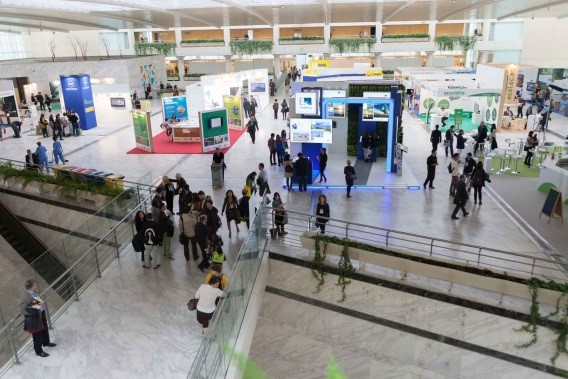
The social activities will include three tapas-cocktails and the performance of a Spanish classical ballet with the occasion of the 50th anniversary of the Spanish Acoustical Society. Accompanying persons will have an interesting program with guided tours to old and new Madrid, including a visit to the Prado Museum and the Thyssen-Bornemisza Museum.
The congress venue, IFEMA Palacio Municipal, is a modern building with excellent connections by the metro with the airport and the city.
INTER-NOISE 2019 MADRID will be an excellent occasion to learn about the latest technologies on noise control and to enjoy the city of Madrid, a fascinating destination with many leisure and cultural options, including large numbers of bars, cafés, restaurants, and markets where you can taste much of the Spain’s gastronomy. Finally, please do not miss the Madrid nightlife, the world-renowned movida (“Madrid movement”).
More information can be found on the congress website: www.internoise2019.org.
Important Dates
Early registration deadline: April 15, 2019
Standard registration deadline: May 31, 2019
On-site registration from June 16, 2019
Language
The official language of the congress is English.
About Madrid
Medieval Madrid
Magerit: “land rich in water.” This is what the Arabs
called this area on the central plain of the Iberian Peninsula, close to Sierra
de Guadarrama, where King Phillip II of Spain would establish the royal court.
Later, it grew into the city that it is today.
Madrid and the
Hapsburg Monarchy
Throughout the sixteenth and
seventeenth centuries, Madrid was the capital of a huge empire. However, the
buildings and landmarks didn’t truly reflect the city’s standing. The churches
and palaces were built in a simple style that had little in common with
ostentatious courts elsewhere in Europe. Austerity was the second name
of the Hapsburg dynasty (or Austrias, as they were called in Spanish).
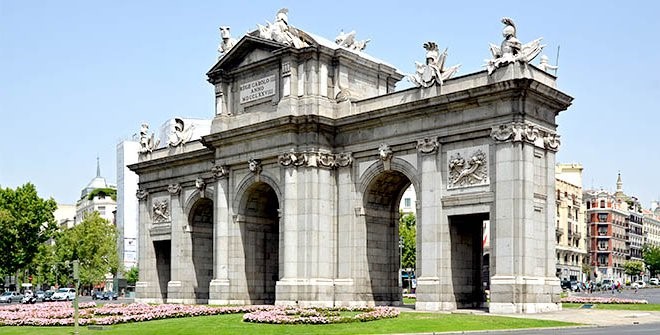
Madrid and the Bourbon Kings
From Philip V (1701), the first Bourbon, a comprehensive urban development plan was developed to adapt Madrid to the taste of European royal courts. The Bourbons built fountains, gardens, triumphal arches, and the new Royal Palace, all of which helped change the appearance of the city.
Modern Madrid: La Movida
In the early 1980s, the Malasaña district witnessed the birth of the movida madrileña, the underground movement that changed Madrid’s image forever.
The Prado Museum, 1819–2019: The Bicentenary of the Museo del Prado
https://www.museodelprado.es/en
https://www.esmadrid.com/en/tourist-information/museo-del-prado
“A place of memory”
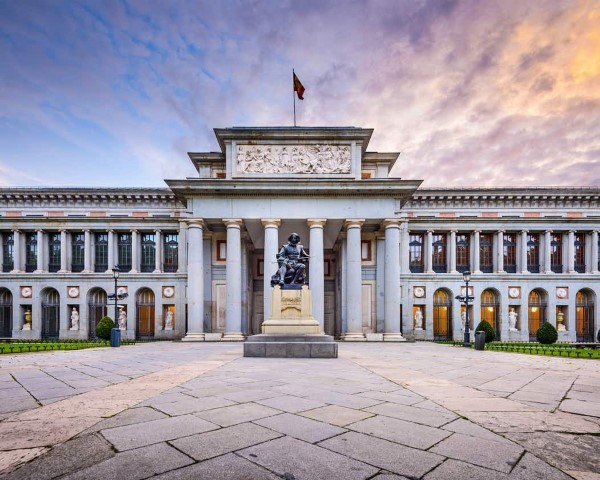
The Museo del Prado opened to the public on November 19, 1819, as a Royal Museum of Painting and Sculpture. In 2019, it celebrates its bicentenary, a commemoration that will reveal the path covered since 1819 until today.
The Prado Museum is the crown jewel of one of the capital’s most visited tourist itineraries: the Paseo del Arte (Art Walk). Its walls are lined with masterpieces from the Spanish, Italian, and Flemish schools, including Velázquez’s Las Meninas and Goya’s Third of May, 1808. Its collection comprises 8,600 paintings and over 700 sculptures, so we recommend you decide what you want to see before stepping into the museum.
Thyssen-Bornemisza National Museum
https://www.museothyssen.org/en
https://www.esmadrid.com/en/tourist-information/thyssen-bornemisza-national-museum
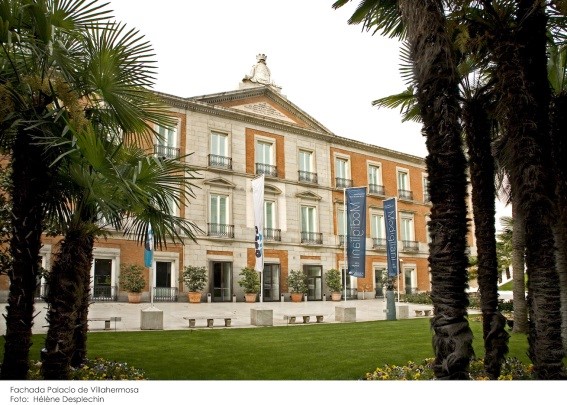
Located on the Art Walk, this museum’s collection traces the history of European painting from the Middle Ages through to the late twentieth century.
Given the wealth and variety of its treasures—more than a thousand works of art—you should start your visit in the section that most interests you. Italian primitives, the German Renaissance, nineteenth-century American art, Impressionism, German Expressionism, and Russian Constructivism are the most widely represented schools and movements in the museum.
Reina Sofía Museum
https://www.museoreinasofia.es/
https://www.esmadrid.com/en/tourist-information/museo-reina-sofia-mncars
Located on the Art Walk, the Reina Sofía houses works by Dalí, Miró, and Juan Gris as well as Picasso’s masterpiece, Guernica.
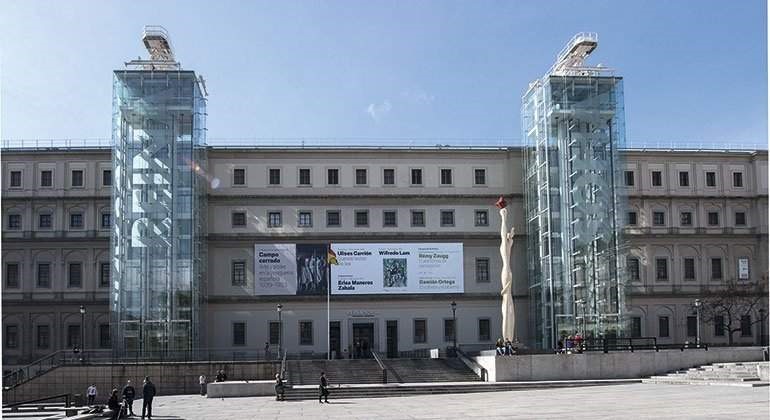
The Royal Palace
https://www.esmadrid.com/en/tourist-information/royal-palace
Home to the Kings of Spain from Charles III to Alfonso XIII, Madrid’s Royal Palace takes us on a journey through the history of Spain. Though it is no longer the royal family’s home, it continues to be their official residence.
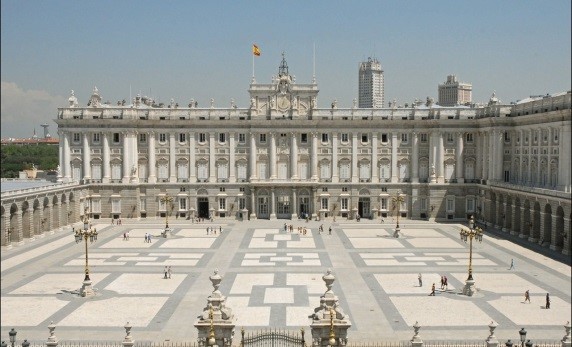
The construction of the palace that stands today was ordered by the King Philip V after a fire burnt the Palace of Austrias, a fourteenth-century fortress, in 1734.
It comprises over 3,000 rooms, including the Main Staircase, designed by Sabatini with over 70 steps; the Throne Hall, featuring a ceiling painted by Tiepolo; the Hall of Halberdiers, which Charles III turned into the Guards Room; the Gasparini Room, with its grand eighteenth-century decoration on a floral theme; the Royal Chemist’s, with natural medicine cabinets, ceramic pots made by the La Granja factory, and even prescriptions given to members of the royal family; and the Royal Chapel, which is home to a collection of string instruments made by the legendary Antonio Stradivari.
The Royal Armoury is one of the most significant collections of its kind, housing weapons and armor worn by the kings of Spain and other members of the royal family since the thirteenth century.
The Painting Gallery is home to a large number of artistic treasures, including Virgin with Child, by Luis Morales; Portrait of Isabella the Catholic, by Juan de Flandes; Salome with the Head of John the Baptist, by Caravaggio; and works by such artists as Velázquez, Goya, Federico Madrazo, and Sorolla.
The Royal Kitchen reopened in October 2017 after a major renovation: the palace’s splendid “Real Cocina” are the oldest well-preserved kitchens of a European royal residence, notable for their size and the excellent state of their accessories.
Santiago Bernabéu Stadium
https://www.realmadrid.com/en/santiago-bernabeu-stadium
https://www.esmadrid.com/en/tourist-information/santiago-bernabeu-stadium
Real Madrid is one of our city’s five professional football teams. Holder of multiple European and international titles, the club opens its doors 363 days a year for football and sports fans to explore its historic stadium, an absolute must on your trip to Madrid.
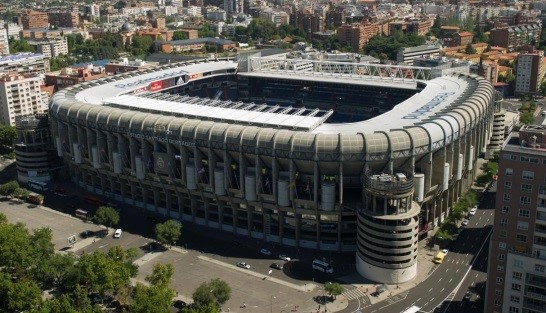
Named after the legendary club president who headed Real Madrid between 1943 and 1978, the Santiago Bernabéu stadium was opened in 1947. It has a capacity for 81,044, with 245 VIP boxes and four restaurants.
The Bernabéu tour takes visitors around the club’s most iconic spots and explores the history of Real Madrid in the Trophies Exhibition.


